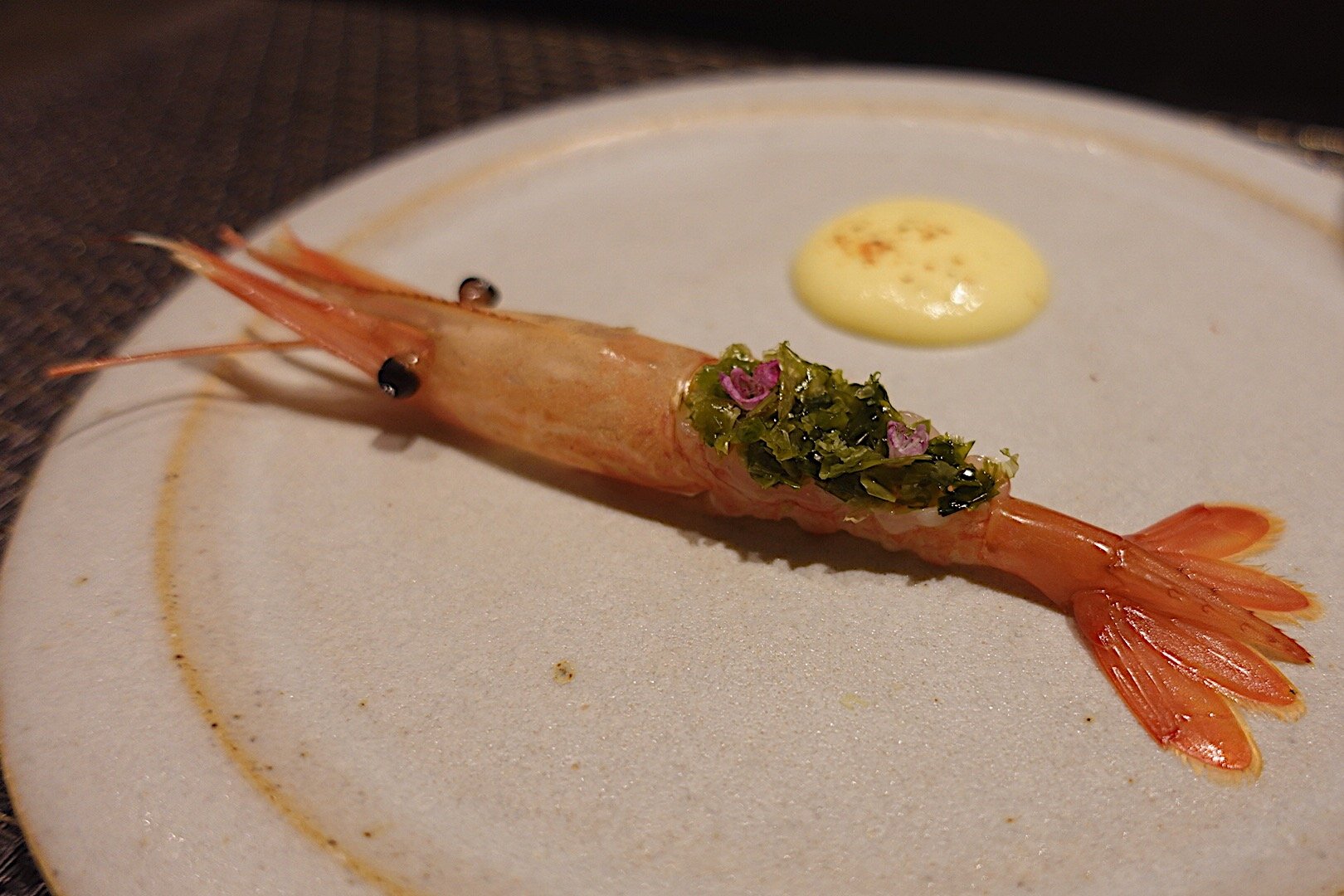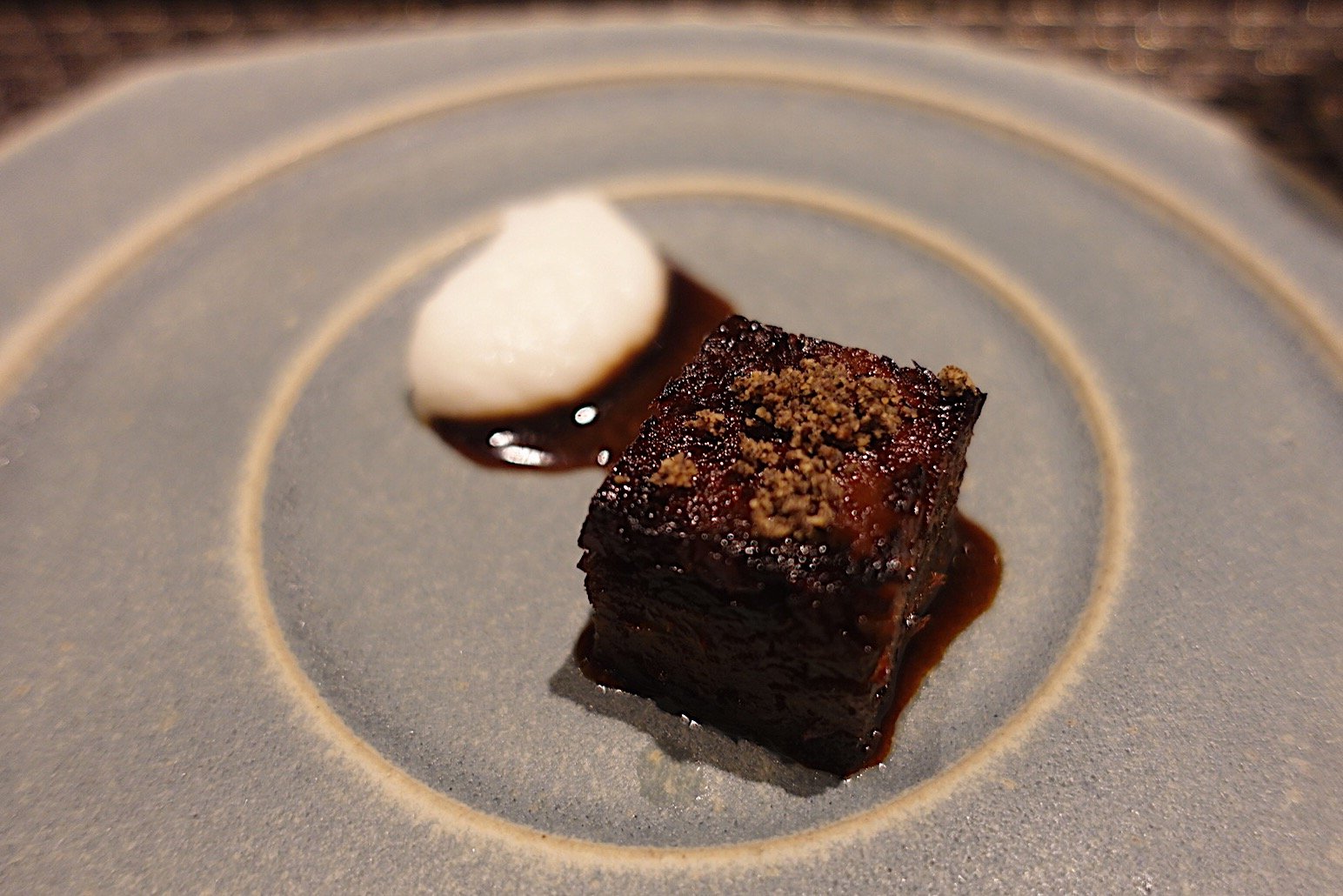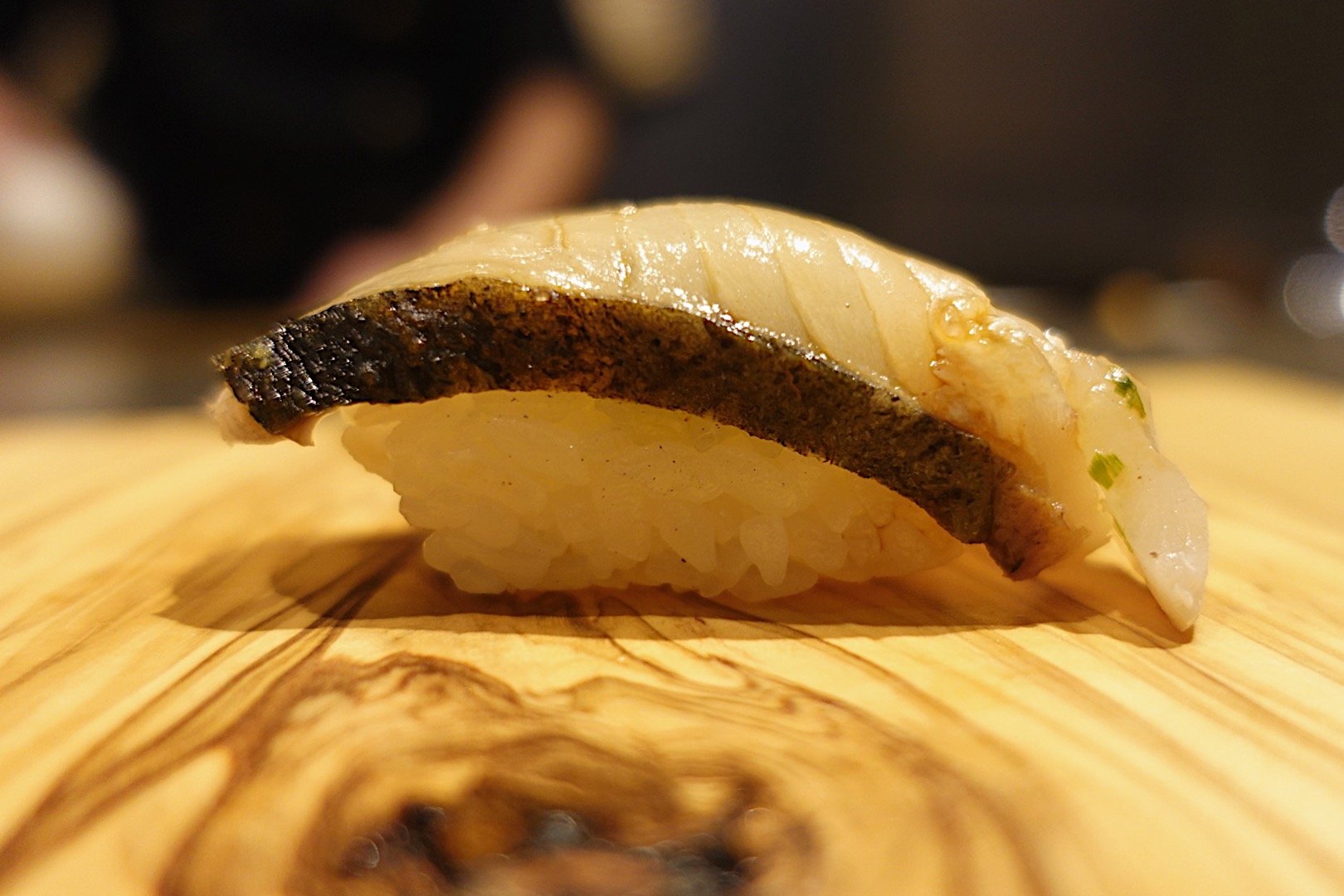Mako Chicago
マコ
731 W Lake St, Chicago, IL, USA 60661
シカゴ・イリノイ州・アメリカ合衆国
It’s admittedly a bit peculiar to come from Japan and visit home in Chicago after almost five years and dedicate the effort and funds towards a sushi omakase. But perhaps it’s this peculiarity that justifies such an endeavor in the first place.
In 2018, I moved to Toyama, Japan, a prefecture bountiful in fresh and distinct seafood, and then worked at the esteemed Sushi Ryujiro and Sushi Takeru for a year out in Tokyo. So seeing what far-from-any-seacoast Chicago had to offer in terms of quality sushi seemed like a poetic means of blending the places I have all called home.
One-michelin star Mako is located on Lake Street in Fulton Market, an area heavily associated with cuisine since its inception that maintains this spririt as one of Chicago’s most hip and culinarily-lauded neighborhoods. At the helm is Chef B.K. Park, who originally hails from Korea and has been an icon of the city’s Japanese and sushi scene since 1999. Chef Park had an extensive tenure at Mirai, followed by heading his own establishments of Arami and Juno, leading up to the opening of Mako in 2019.
For a city like Chicago, sushi will always occupy a space of intrigue and challenge. It is technically a coastal city, though it is on the coast of freshwater Lake Michigan, presenting little to no bounty of aquatic goodies that are edible, let alone delicious, when served raw. Additionally, Chicago is geographically located right in the center of the United States, practically as far from either the Atlantic or Pacific coasts as it could possibly be. Chicagoan foodies will always maintain a strong appreciation for sushi and sashimi but struggle with the eternal uphill battle of logistics: delicious seafood is available in the city, but at a premium cost and under unideal circumstances for preservation.
I was interested to see what workarounds Chef Park had in store to present Michelin-star-level sushi to the city, especially given the spoils easily indulged in back on the Japanese archipelago. What came out of it was an apparent know-how of adequate sourcing of ingredients, as well as distinct touches to the omakase that properly fit Chicago’s culinary identity as well as highlighting a roster of delicious seafood from all over the world, something that contrasts the large emphasis on domestic ingredients back in the sushi motherland.


Early on, this international gallery of fine ingredients is on display with an otsumami consisting of a Canadian-sourced amaebi paired with a corn puree sauce. Later on in the meal, a braised lamb kakuni with a turnip puree introduces a unique western addition, utilizing a traditional Japanese technique with a meat not found in the traditional Japanese culinary repetoire, and especially one that isn’t found in omakase culture.
But it’s important to remember that Mako’s menu is Chef Park’s love letter to traditional sushi in Japan, and his presentation of certain staple dishes, with his own personal touches, reflects this. Look to the winter-prime ankimo (monkfish liver) served alongside two other amuse bouches of akami sashimi with thin slices of yamaimo (mountain yam) in between, along with small morsels of abalone, finished with a liver sauce and a bitter gingko nut. Around halfway through the meal, a light consommée/dashi, featuring seasonal shellfish (this time, it was manila clams) provides subtle brininess and a pleasingly warm palette to contrast the outside Chicago winter. Then, the grilled mehikari (Deep Sea Greeneye) is served with a burnt scallion ponzu sauce and is modest in its presentation but big in toasty savoriness, complimented with acidic ponzu. It was my favorite otsumami of the night, a series of small bites dense with bold flavors.
Moving on to the sushi, nigiri is served in a series of three to five pieces, sandwiched between otsumami dishes with a few temaki (handrolls) as well. The selection varies by season, but the cold winter comes with a hefty bounty of seafood sourced all the way from Hokkaido in northern Japan, including the first piece of scallop, the sawara (Spanish Mackerel), and the uni (sea urchin) handroll. Different variations of maguro are distributed throughout the sequence, starting from akami (lean tuna), chutoro (medium-fatty tuna), and otoro (fatty-belly tuna). The initial two were served brushed with soy sauce, and the otoro was topped with simple salt. There was also a negitoro handroll towards the end of the meal, pureed a bit more finely compared to current trends in Japan that call for a more chunky, fatty consistency.
Different shiromi (white fish) came in the form of classic offerings such as madai (snapper) and hiramasa (yellowtail). Chef Park had a particular pride in his saba (mackerel) for the day. Topped with marinated negi and well-balanced oiliness and fishiness, it is for a good reason.
Though salmon is a staple of sushi found all over Japan, it was originally introduced by Norway’s salmon industry and then popularized in the 1980s. Instead, at higher-end sushiya, domestic variations of trout from places like Nagano and Aomori will be found more often. Out in Chicago, North American-sourced King Salmon finds itself on the menu, very bright tasting with slick fattiness.
Then later on, Miyazaki wagyu beef is placed raw atop sushi rice, then served aburi (seared) with a blowtorch. This is also an element of the omakase that is likely going to be mostly found in the west, appealing to the near-mythical appreciation and draw of the marbling-heavy meat that is often found there. Even if not fully traditional, savory and beefy on the surface, yet fresh and rich towards the rice, it is a standout bite.
Alongside me at the restaurant was a friend who works at the famed Kasama in Chicago, the only Filipino restaurant in the world awarded a Michelin Star. Chef/owner of Kasama, Tim Flores, worked under Chef Park for some considerable time, and as a special gift, we received a number of off-menu, unique dishes, including the first otsumami consisting of dried okra, tobiko, and maguro, and a broiled piece of akami maguro topped with uni that was actually sourced from Maine with a bit more of a savory brininess and bite to it that contrasted the silky and sweet Hokkaido uni served in the handroll.
The meal ended in a very traditional fashion, with additionally-requested nigiri pieces (we chose the sawara and madai), aka-anago (braised and seared conger sea eel), and sushiya-style atsuyaki-tamago, which we ordered one additional piece of per my own personal rule. The atsuyaki-tamago, made with shrimp eggs and grated yama-imo, was spongy, sweet, and cake-like, yet still notably eggy. It goes toe-to-toe with some of the best sushiya tamagoyaki I’ve had in my years in Japan, a compliment well-received by one of the other sushi chefs behind the counter that made it.
Given the impressive array of dishes and sushi and Chef B.K. Park’s apparent passion for his over two-decade-long path, it’s safe to say that Chicago is home to a quality omakase culture that is all it’s own. One well-influenced by the cuisine’s birthplace yet properly adapted to the culinary identity of the city it calls home.





















